Incense Route
Q754999Incense Route: one of the main trade routes on the Arabian Peninsula, used to bring incense from the deep south to the Mediterranean.
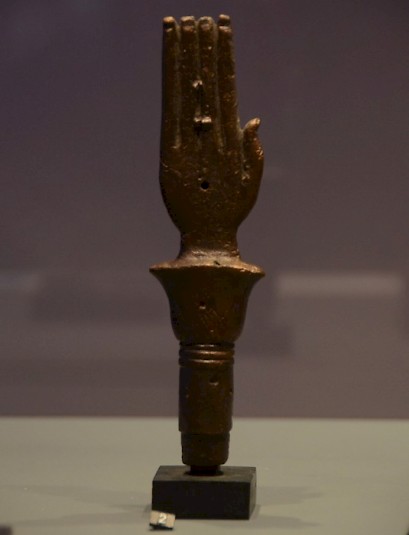
Towards the end of the seventh century BCE, the Greek lyric poet Sappho sang about the wedding of Andromache and Hector. In this poem,note she mentioned several lovely fragrances, including frankincense, for which she used the Arabism libanos. It added a touch of exotic luxury to the scene.
Sappho does not explain what this aromatic resin was. Her audience knew, and we may deduce that frankincense, which had been a rare and precious comodity in the Bronze Age, was by now imported to the Mediterranean world in relatively large quantities. Archaeologists have indeed documented the rapid spread of incense burners and altars. The boom comes surprisingly early: the dromedary, which is required to travel through the Arabian deserts, had become a common sight in trade caravans in the ninth century only. That the custom of incense-burning had already spread to Greece in the seventh century suggests that it had become an important part of everyday life.
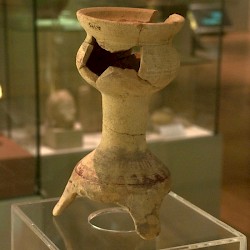 Ras al-Qalah, Incense Burner |
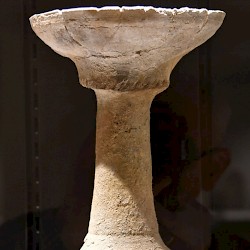 Kamed el-Loz, Incense burner |
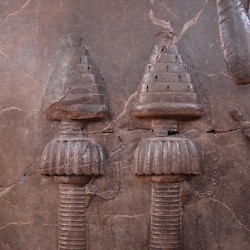 Persepolis, Apadana, Northern Stairs, Central Relief, Incense burners |
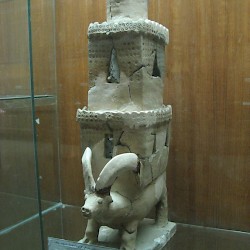 Tell Basmosian, Hurrite incense burner |
However, this was only the beginning. Writing in the mid-fifth century, Herodotus of Halicarnassus remarks that every year the Babylonians burnt 800 talents of incense for their supreme god Marduk.note He also reports that when the Persians occupied the isle of Delos in 490 BC, they sacrificed no less than 300 talents to Delian Apollo in a single day.note The Roman author Pliny the Elder quotes connoisseurs who believed that Emperor Nero burnt more frankincense at the funeral of his wife Poppaea than Arabia produced in a year.note During Decius’ persecution of the Christians, hundreds of thousands of Romans burnt incense to the Emperor. In short, frankincense was used on a massive scale.
From one temple to another
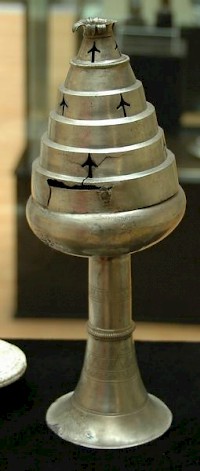
That no foreigner knew how frankincense was produced, must have contributed to its appeal. Herodotus knew only stories about flying snakes who guarded the product.note Later authors – who probably should have known better – repeated the stories that had been told to discourage visitors. For example, we learn that the climate in the Frankincense Country was so unhealthy that work was left to deported criminals.note
Aristotle’s pupil Theophrastus learnt the truth from sailors from Heroonpolis in eastern Egypt. To find water, they had gone ashore in what we call Oman, and had seen the frankincense trees at harvest time. Because the inhabitants were, as Theophrastus adds matter-of-factly, “righteous people”, they had not thought of guarding their trees, enabling the sailors to take some of the frankincense, put it on board, and sail away.note
Their booty was the resinous dried sap of a small tree that is known to botanists as Boswellia Sacra. It grows only on certain soils in hot and humid climates in western India, eastern Africa and – important for us – Dhofar in southwestern Oman. Here, the monsoon rains make sure that there is sufficient water. “An inaccessible and rugged land,” according to the Periplus, “wrapped in impenetrable clouds and mist.”note
Theophrastus explains how the resin was tapped. With axes, the ancient Omanians made incisions in the stems, where the sap might thicken, until the resin was harvested. There were smaller cuts in the branches, from which the gum might drip to the ground, where mats were placed to collect the drops (which are usually called “tears”). The collected resin was brought to the temple of the Sun, which apparently played an important role in the incense trade. This fits in an oriental context, where temples and palaces had for centuries been the nodes of international trade.
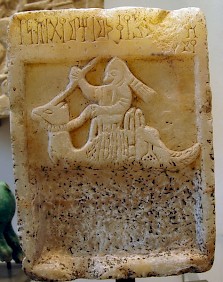
From the temple of the Sun, caravans brought the produce to the cities of ancient Yemen. Because the load was precious, there were forts along the roads, like the one that has been excavated at Shisr in Oman. The excavators found artefacts from Iran and the Roman Empire, which indicate the extent of the trade network. Interestingly, the fort collapsed because too much ground water had been taken by passing caravans, undermining the site.
Some 500 kilometers to the west was Shabwa, the capital of a kingdom named Hadramaut and one of the great cities of ancient Yemen. Here, the merchants visited another temple, where they had to pay a tithe of 10%. As that was a lot of money, the Greeks and Romans came to believe that the kingdoms in this part of the world were incredibly rich. They called Yemen “Happy Arabia”, although from the local inscriptions, we can deduce that the Yemenite city-dwellers did not consider themselves Arabs, who were shepherds and nomads. This was to change, as we will see below.
From Shabwa to Gaza
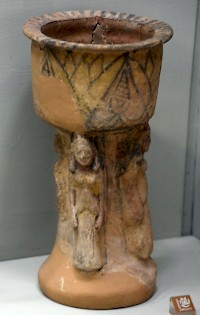
After the formalities in the temple of Shabwa, the merchants proceeded on different roads, which led to Mesopotamia, Syria, and Egypt, and from there to all over the ancient world. The itineraries were fixed and Pliny mentions that it was a criminal offense to take a different route.note The caravans first moved to Timna and Marib, the capitals of Qataban and Saba. Turning to the northwest to their next stop, the well-watered oasis of Najran, the merchants exchanged the urban world of Yemen for the nomadic land of the Arabs.
For several weeks, the merchants moved to the northwest. Unfortunately, we cannot reconstruct the route to Yathrib (modern Medina). It has been assumed that Mecca was one of the road stations, but this would have been a detour. On the other hand, there was an important sanctuary and a connection to the port of Jeddah. Besides, a detour better fits the distance mentioned by Pliny, who states that between Shabwa and Gaza, the merchants passed sixty-five stations and covered 2437.5 Roman miles or 3609 kilometers.note
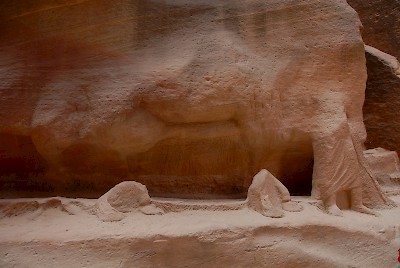
Whatever their precise route, the merchants arrived in Yathrib, from where they continued to Dedan and Hegra (Al-Khuraybah and Mada’in Saleh in the Al-‘Ula oasis). There, they found themselves in the land of the Nabataeans, whose capital Petra, 500 kilometers to the north, was the next stop. The last section of the Incense Route brought them to port like Aqaba, Caesarea, or Gaza.
All along the road, the merchants keep paying: for fodder, water, lodging, or tolls. Before they reach our shore, their expenses mount up to 688 denarii per dromedary. And now, they have to pay our tax officials.note
High prices were the logical consequence: the best frankincense cost twenty-four sesterces a pound, which would have been about a week’s wage for a skilled laborer. Pliny complains that the Romans spend, “according to the lowest estimates”, no less than a hundred million sesterces on oriental luxury.note
It must be noted that from Hegra, there was also a branch to the northeast: via Tayma and Duma, a traveler would reach northern Babylonia.
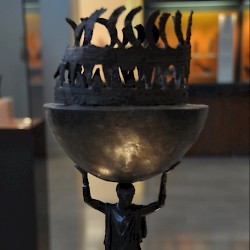 Delphi, Incense burner from a Parian workshop |
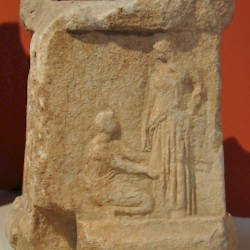 Thessaloniki, Incense Burner |
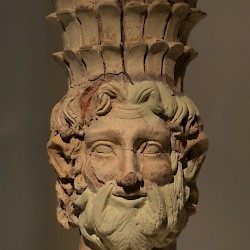 Carthage, Salammbo, Incense burner in the shape of Baal-Hammon ("the fiery Baal") |
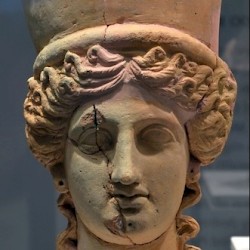 Carthage, Incense burner |
From Heroonpolis to Aden
To explore the Incense Route and to gain control of it, Roman emperor Augustus sent out Aelius Gallus, prefect of Egypt, with orders to subjugate Yemen.note Although the expedition in 25 BCE failed to achieve its second objective, the first part of its mission was successful. From now on, the Romans knew more about the mysterious country on the world’s southern edge. Gallus’ reports were read by Strabo and Juba, and are behind the account of Pliny.
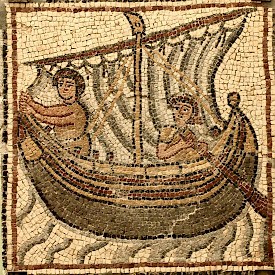
After Gallus’ expedition, sea trade in the Red Sea became more important. Yemen-bound ships left Heroonpolis in Septembernote and were sailing for about three weeks to reach the ports of Mouza and Ocelis (both near modern Mocha) and Eudaimon (modern Aden). Here, the merchants bought frankincense, pearls, and a fine, alabaster-like marble that helped to stabilize their ships.
A final call was made at Moscha, which has been found at Khor Rori on the coast of Dhofar in Oman: a small but carefully planned town with storehouses, a temple, and a market place. The excavated objects document trade with both the Roman Empire and India. If the merchants decided not to continue to Persia or India, they would return to Heroonpolis and bring the frankincense to Alexandria. When the Mediterranean Sea became navigable again in spring, everything was ready for the voyage to Rome.
Several factors must have contributed to the rise of the sea route. The annexation of Egypt gave the Roman Empire access to the Red Sea, while the end of the civil wars may have allowed people to spend more money on luxury, which increased demand. Besides, sea trade is cheaper than land trade. Perhaps the devastation caused by Gallus’ army also contributed to the shift to the Red Sea.
At the beginning of the second century CE, the sea route had already become so important that the Romans placed a garrison on the Farasan Isles, not far from the southern entrance of the Red Sea. With marine trade protected, and a huge income guaranteed, Himyar (the Yemenite kingdom in control of the ports of Muza and Ocelis) grew more ambitious and eclipsed the kingdoms in the interior, which were still using the land road. By the end of the third century, Himyar had subdued all of Yemen.
From Mecca to Bosra
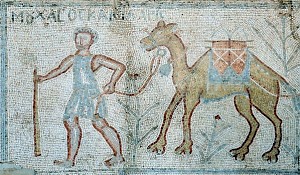
In Late Antiquity, the frankincense trade collapsed, because the Christians – who increasingly dominated Roman society – considered incense-burning idolatrous. The fall in demand resulted in the demise of the sea route. The sixth century saw great changes on the Arabian Peninsula, and usually not for the better. Muslim horror stories about the Jahiliyyah (the “age of ignorance” before Muhammad) may reflect this period of social unrest.
These troubles need not detract us, but one remarkable event must be mentioned: in the third quarter of the sixth century, a Himyarite ruler named Abraha marched on Mecca. An elephant was part of his army and, as a result, the southern part of the Incense Route came to be known as the “Elephant Road”. Clearly, the ancient trade road was still in use.
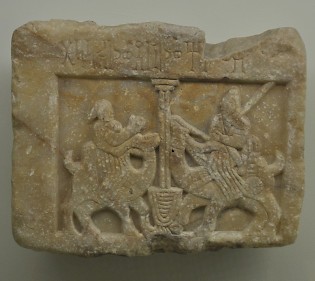
The northern part of the route was used by merchants like Muhammad, who was born in the “year of the Elephant” and is mentioned as traveling all the way up north to Bosra near Damascus. According to Islamic legend, a Christian monk identified the merchant from Mecca as a messenger of God.note Although the story itself is imaginary, it presupposes that the caravan road had not fallen in disuse, even when incense was no longer as popular as it used to be.
In 629 and 630, shortly before the death of Muhammad, Arab armies marched from Yathrib northward, and skirmished with the Byzantines at Mu’tah and Tabuk. Although both expeditions were fruitless, they prove that along the route everything was still sufficiently well-prepared to allow large groups of soldiers to move along it. In the confused years after the death of the prophet (probably in 632), we see similar army movements along the ancient roads, which have been used by Muslim pilgrims ever since.
From Diversity to Unity
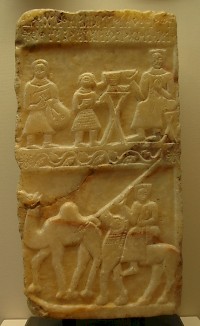
For centuries, merchants had been traveling from Oman to Yemen, and from there to Heroonpolis and Alexandria, to Petra and Gaza, to Syria or Mesopotamia. There had been all kinds of interaction: commercial collaboration of course, but the roads of Arabia had also been used by armies, pilgrims, migrating clans, shepherds with their flocks, or people just visiting relatives.
Ancient ethnic differences, like the distinction between the Yemenites and the Arabs, gradually disappeared. The political unification of the Arabian Peninsula and the rise of Islam were, in a way, the final stage of a unification process that had taken off when the dromedary had been domesticated and the frankincense trade had started.
Further Reading
Among the general introductions to ancient Arabia are J.F. Breton’s Arabia Felix (1999) and R.G. Hoyland’s Arabia and the Arabs (2001). The archaeology of Saudi Arabia and the rise of the pilgrim roads was the theme of a large exposition in the Louvre, Roads of Arabia (2010); the catalogue was published by B. André-Salvini. About Rome’s eastern trade, there’s R. McLaughlin, The Roman Empire and the Indian Ocean (2014).
[This article was originally published in the first issue of Ancient History Magazine.]